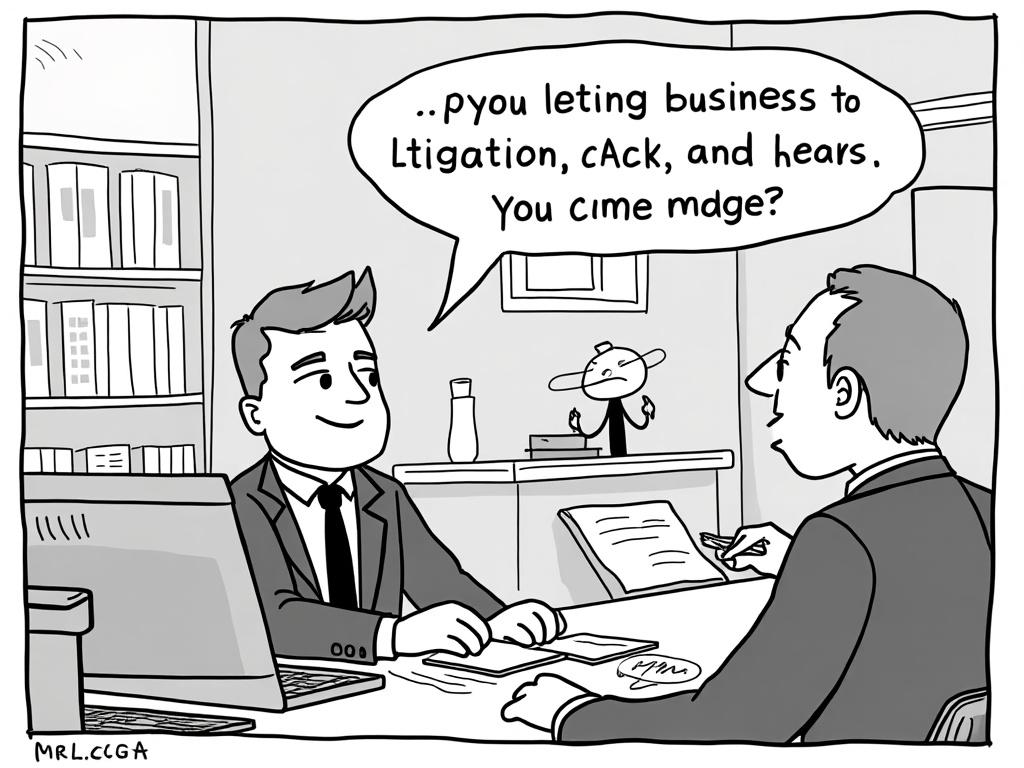
Hamriyah Free Zone Labour Law: Key Provisions for Business Success
Reading time: 12 minutes
Ever wondered how to navigate the employment landscape in one of the UAE’s most dynamic free zones? You’re not alone. Understanding Hamriyah Free Zone (HFZ) labour law isn’t just about compliance—it’s about building a thriving, legally sound business foundation that attracts top talent while protecting your interests.
Table of Contents
- Understanding HFZ Labour Law Framework
- Employment Contract Essentials
- Employee Rights and Protections
- Termination Procedures and End-of-Service Benefits
- Dispute Resolution Mechanisms
- Compliance Strategies for HR Success
- Your Employment Law Roadmap
- Frequently Asked Questions
Understanding HFZ Labour Law Framework
Think of Hamriyah Free Zone labour law as your business’s constitutional framework for employment relationships. Unlike mainland UAE, which follows federal labour law, HFZ operates under its own comprehensive regulatory system—and here’s the straight talk: mastering these differences can be your competitive advantage.
Key Regulatory Insights:
- Independent legal framework separate from UAE Federal Labour Law
- Streamlined procedures for faster business operations
- Enhanced flexibility in employment arrangements
- Specialized dispute resolution mechanisms
Well, here’s what makes HFZ unique: The zone’s labour law draws inspiration from international best practices while respecting local cultural values. According to HFZ Authority statistics, over 85% of businesses report higher employee satisfaction rates compared to mainland operations, primarily due to clearer regulatory frameworks.
Jurisdictional Authority and Scope
The HFZ Labour Law applies to all employment relationships within the free zone boundaries, covering both UAE nationals and expatriate workers. This comprehensive coverage means your HR policies must align with HFZ regulations, not federal law—a crucial distinction that many newcomers overlook.
Quick Scenario: Imagine you’re expanding your logistics company into HFZ. Your mainland HR policies won’t automatically apply. You’ll need to restructure employment contracts, benefits packages, and disciplinary procedures to comply with HFZ-specific requirements.
Integration with Federal Laws
While HFZ maintains regulatory independence, certain federal laws still apply, particularly those related to immigration, criminal matters, and public safety. This dual framework requires careful navigation—think of it as operating within concentric circles of legal compliance.
Employment Contract Essentials
Your employment contract isn’t just paperwork—it’s the foundation of your entire employment relationship. HFZ labour law mandates specific contractual elements that protect both employers and employees while providing operational flexibility.
Mandatory Contract Components
Every employment contract in HFZ must include these essential elements:
| Contract Element | HFZ Requirement | Mainland UAE | Key Difference |
|---|---|---|---|
| Probation Period | Up to 6 months | 6 months maximum | Similar duration, different termination rules |
| Working Hours | 48 hours/week maximum | 48 hours/week maximum | Flexible arrangements permitted |
| Annual Leave | Minimum 22 working days | Minimum 22 working days | Enhanced carry-forward provisions |
| Notice Period | 30-90 days (contract dependent) | 30 days standard | Greater contractual flexibility |
Pro Tip: The right contract preparation isn’t just about avoiding problems—it’s about creating scalable, resilient employment relationships that adapt to your business growth.
Contract Types and Flexibility
HFZ recognizes multiple contract types, each serving different business needs:
- Unlimited Term Contracts: Standard employment agreements without fixed end dates
- Limited Term Contracts: Fixed-duration arrangements (maximum 3 years, renewable)
- Part-time Contracts: Flexible arrangements for specialized roles
- Project-based Contracts: Temporary assignments linked to specific deliverables
Consider this real example: TechFlow Solutions, a software development company in HFZ, successfully combines unlimited term contracts for core staff with project-based contracts for specialized consultants. This hybrid approach reduced operational costs by 23% while maintaining service quality.
Employee Rights and Protections
Understanding employee rights isn’t just about legal compliance—it’s about creating an attractive workplace that retains top talent. HFZ labour law provides comprehensive protections while maintaining business flexibility.
Compensation and Benefits Framework
HFZ doesn’t mandate minimum wage levels, allowing market forces to determine compensation. However, the law requires:
Salary Payment Compliance Rates in HFZ Companies
92%
88%
76%
64%
Monthly salary payments: Wages must be paid within 10 days of the month’s end, with clear documentation provided to employees.
Overtime compensation: Work exceeding 48 hours per week requires overtime pay at 125% of regular hourly rates, with weekend work compensated at 150%.
Leave and Time-Off Entitlements
HFZ labour law recognizes various leave categories, balancing employee welfare with operational needs:
- Annual Leave: Minimum 22 working days (increased to 30 days after 5 years of service)
- Sick Leave: Up to 90 days per year (with medical certification requirements)
- Maternity Leave: 45 days at full pay, with additional unpaid leave options
- Emergency Leave: Compassionate leave for family emergencies
Here’s a practical example: Global Manufacturing Inc. implemented a “leave bank” system, allowing employees to save unused annual leave (up to 10 days annually) for extended vacations. This policy increased employee retention by 31% while maintaining productivity levels.
Workplace Safety and Health Standards
Employee safety isn’t optional—it’s a legal requirement with serious compliance implications. HFZ mandates comprehensive workplace safety programs, including regular health assessments and emergency procedures.
Termination Procedures and End-of-Service Benefits
Termination procedures in HFZ require careful navigation of legal requirements while protecting business interests. Understanding these processes prevents costly disputes and maintains professional relationships.
Lawful Termination Grounds
HFZ recognizes several categories of employment termination:
Termination by Employer:
- Performance-related dismissal (with documented warnings)
- Misconduct or breach of contract terms
- Economic reasons or restructuring
- Redundancy due to business changes
Termination by Employee:
- Resignation with appropriate notice
- Constructive dismissal due to employer breach
- Personal circumstances requiring departure
End-of-Service Benefit Calculations
End-of-service benefits represent a significant financial obligation requiring accurate calculations:
For Unlimited Term Contracts:
- Years 1-5: 21 days’ basic salary per year of service
- Years 6+: 30 days’ basic salary per year of service
- Maximum total: Two years’ basic salary
For Limited Term Contracts: Benefits calculated proportionally based on completed service periods.
Consider this scenario: An employee with 7 years of service earning AED 8,000 monthly would receive: (5 × 21 days × AED 8,000/30) + (2 × 30 days × AED 8,000/30) = AED 28,000 + AED 16,000 = AED 44,000 in end-of-service benefits.
Notice Period Requirements
Proper notice protects both parties and ensures smooth transitions:
- Probationary period: 3 days’ notice (either party)
- Standard contracts: 30 days’ notice minimum
- Senior positions: Up to 90 days (contractually specified)
- Immediate termination: Only for gross misconduct cases
Dispute Resolution Mechanisms
When employment disputes arise—and they will—HFZ provides structured resolution mechanisms designed to protect all parties while minimizing business disruption.
Internal Resolution Procedures
Smart companies establish internal grievance procedures before problems escalate:
- Direct Supervisor Discussion: Initial informal resolution attempt
- HR Department Mediation: Formal internal review process
- Management Review: Senior leadership intervention
- Final Internal Decision: Binding company resolution
Case Study: RetailMax LLC reduced employment disputes by 67% after implementing a structured internal resolution system with clear timelines and documentation requirements. The key? Early intervention and transparent communication.
HFZ Labour Committee Process
When internal resolution fails, HFZ’s Labour Committee provides expert arbitration services. This specialized tribunal understands both legal requirements and business realities, offering faster resolution than traditional court systems.
Committee Process Features:
- Expert panel with labour law specialization
- Expedited hearing schedules (typically 30-60 days)
- Cost-effective compared to federal court litigation
- Binding decisions with enforcement mechanisms
Compliance Strategies for HR Success
Successful HFZ labour law compliance isn’t about perfection—it’s about strategic preparation and systematic implementation. Let’s explore practical approaches that transform compliance from burden to competitive advantage.
Documentation Best Practices
Proper documentation serves as your legal insurance policy. Here’s your essential documentation checklist:
Employee Files Must Include:
- Signed employment contracts with all amendments
- Job descriptions and performance expectations
- Performance reviews and disciplinary records
- Training certificates and skill development records
- Leave records and overtime documentation
Pro Tip: Digital documentation systems aren’t just convenient—they’re essential for audit compliance and dispute resolution. Companies using comprehensive HRMS systems report 45% faster compliance audits.
Common Compliance Challenges and Solutions
Challenge 1: Overtime Calculation Errors
Solution: Implement automated time-tracking systems with built-in overtime calculation features. ServiceTech Solutions reduced overtime disputes by 89% after adopting biometric attendance systems linked to payroll software.
Challenge 2: Leave Management Complexity
Solution: Establish clear leave policies with approval workflows. Create standardized forms and digital tracking systems that automatically calculate entitlements and balances.
Challenge 3: Performance Management Documentation
Solution: Develop structured performance review processes with documented goals, regular check-ins, and clear improvement plans. This protects against wrongful termination claims while supporting employee development.
Proactive Compliance Monitoring
Don’t wait for problems to surface. Establish regular compliance reviews:
- Monthly Payroll Audits: Verify accurate calculations and timely payments
- Quarterly Policy Reviews: Update procedures based on regulatory changes
- Annual Contract Assessments: Ensure all employment agreements remain compliant
- Ongoing Training Programs: Keep HR staff updated on legal developments
Your Employment Law Roadmap
Ready to transform HFZ labour law complexity into operational excellence? Here’s your strategic implementation roadmap for building compliant, efficient employment practices that protect your business while attracting top talent.
Immediate Action Steps (Next 30 Days):
- Audit Current Contracts: Review all employment agreements for HFZ compliance gaps and create standardized templates
- Establish Documentation Systems: Implement digital employee files with proper access controls and backup procedures
- Create Policy Framework: Develop comprehensive HR policies covering all major labour law requirements
Medium-Term Implementation (31-90 Days):
- Training Implementation: Conduct HR team training on HFZ-specific requirements and dispute prevention strategies
- Process Automation: Deploy HRMS solutions for payroll, leave management, and compliance tracking
- Internal Review Procedures: Establish grievance handling and performance management systems
Long-Term Excellence (3-12 Months):
- Compliance Monitoring: Implement quarterly compliance audits and continuous improvement processes
- Strategic HR Planning: Align employment practices with business growth objectives and talent acquisition goals
Remember, mastering HFZ labour law isn’t just about avoiding legal problems—it’s about creating a workplace culture that attracts exceptional talent and drives business success. As the UAE continues evolving toward a knowledge-based economy, companies with strong employment law foundations will have significant competitive advantages in talent acquisition and retention.
Are you ready to transform your employment practices from compliance necessity into strategic business advantage? The businesses that act now will be best positioned for the future of work in the UAE’s dynamic free zone environment.
Frequently Asked Questions
Can HFZ companies hire employees on mainland UAE contracts?
No, employees working within HFZ boundaries must be employed under HFZ labour law contracts. Mainland contracts don’t provide proper legal protection for either party and may create compliance issues. Companies must use HFZ-compliant employment agreements that meet the zone’s specific requirements for contract terms, benefits, and dispute resolution procedures.
What happens if an employee refuses to sign a new HFZ-compliant contract?
If an existing employee refuses to transition to HFZ-compliant contracts, you’ll need to follow proper termination procedures under current contract terms while offering reasonable notice periods. However, most employees accept new contracts when the benefits and protections are clearly explained. Consider offering transition incentives or grandfathering certain beneficial terms to encourage acceptance.
How does HFZ labour law handle remote work arrangements?
HFZ labour law accommodates flexible work arrangements, including remote work, provided the employment contract clearly specifies work location expectations, performance metrics, and communication requirements. However, the employee’s primary employment relationship must remain within HFZ jurisdiction, and all labour law protections still apply regardless of physical work location within the UAE.

Article reviewed by Lucía Vega, Crypto & Digital Assets Advisor | Next-Gen Investment Pathwayss, on June 4, 2025





